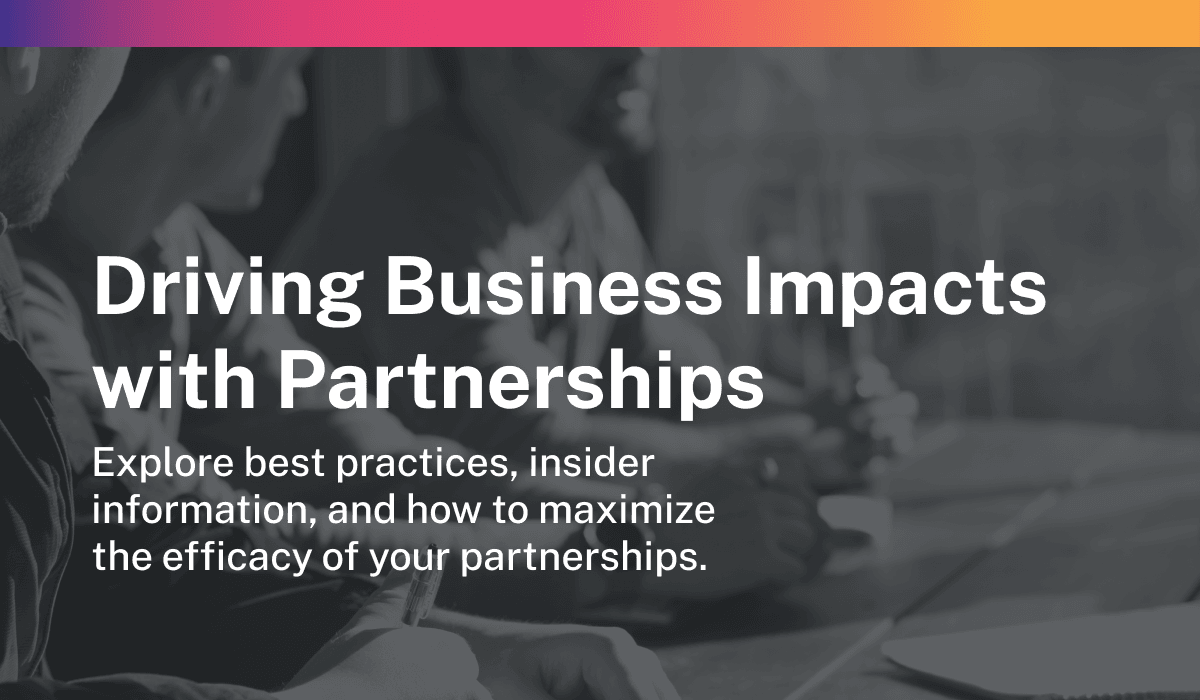
Working in partnerships can be an exciting career opportunity. Many professionals find their way into partnerships in different ways. Often, they have a background in other SaaS functions, such as product engineering or marketing.
Many former salespeople, marketers, and others enjoy the overlap they find in skills needed when moving to a role in partnerships. Most professionals we’ve talked to have highlighted how different skills from past roles have transferred over in some way or another
Sales is incredibly focused on relationship building and nurturing, both of which are key skills for growing partnerships. Salespeople also have experience with selling both internally and externally, another key element of establishing successful partner relationships.
Sarah Jackson of Contentsquare has over 20 years of experience in direct sales, sales leadership, and partnerships. “Companies are so happy to have partner managers with a huge Rolodex. While that’s valuable, partner managers have to be good salespeople. You really have to understand your internal sales product so you can represent it well.”
Jenna Wyer of Recurly, “When you head up sales organizations, partnerships is a natural evolution for things you manage — especially when you’re part of a smaller team.”
One of the first things to establish when developing a partner program is your value proposition for partners. Being able to refine that statement for your different partners, as well as communicate it effectively is something that will be familiar to marketers.
Additionally, developing joint go-to-market strategies is a significant element of partnerships, which directly relates to marketing experience.
Aligning internal resources is an incredibly important, but often overlooked factor of partnerships. Professionals who come from the product space typically have experience aligning across teams.
Kristin Hagan of ChiliPiper worked in product marketing, product management, and then engineering before transitioning to a role in partnerships.
“My experiences allow me to partner both internally and externally. One of the most significant aspects of a successful partner leader is being able to align internal resources. A critical piece of the partner team is external facing, but to be successful you need to have internal support across Sales, Marketing, Customer Success, Operations, Engineering, and Product.”
While partnerships comes in many different forms and can be approached in vastly different ways across organizations, there are a few key things you’ll want to keep in mind when starting your first role.
Partnership development takes time. Patience is an absolute must. Partners regularly share with us that they’ve worked on significant deals that have taken years to close.
There will be hiccups, as there are in any business relationship. With partnerships, you really need to focus on setting both yourself and your partners up for success. This includes being overtly communicative and checking in regularly. If anything does come up, you should talk through the issue to understand why it came up and to ensure it doesn’t in the future.
There’s tons of space for you to shape the field. Partnerships hasn’t been a career option for long. As the vertical continues to shift and evolve, you can have a significant impact. Look for opportunities to share your insights and speak up if you think something is broken.
There are tons of “flavors” of partnerships. There are so many different aspects of partnerships that you can find the one you love. If the first role you land isn’t your ideal position, explore another niche in partnerships. If your role shifts and you’re no longer enjoying what you’re doing, you can move.

The first step of launching a successful partner program is educating your team on the value of partnerships. Without organization buy-in, you’ll struggle to make progress, and when you do, you’ll be faced with roadblocks. Many partners we’ve talked to highlighted the importance of getting different departments of your organization involved.
You don’t need a fully baked partner program out of the gate, but it’s imperative to establish internal support. Without it, you won’t be able to continue progressing partnerships. Deven Ravel of Welcome Software shared, “If a partner program is siloed off from other parts of the business, it won’t scale.”
Once you’ve communicated internally, you need to define your value proposition for partners. This should be centered around your partner and how you benefit their organization. Realistically, your value proposition will evolve over time as you learn more about your partners and how you work together.
Along the same lines, it’s important when launching a partner program to solicit feedback as much as you can. Partners will value the opportunity to share their thoughts and appreciate you considering their input when shaping your program.
Partnerships can have a variety of positive impacts, which is why the field is gaining popularity. From referred pipeline to improved distribution, expansion of product offerings, and ecosystems, there are tons of ways partnerships can drive results at your organization.
As a relatively new organization, or even an established one looking to break into a new market, partnerships can be a great way to get your logo in front of a relevant audience.
Probably most attractive is the potential to generate sales and increase revenue with partnerships. In addition to expanding your audience, partnerships is known to improve sales efficiency. Many partners we’ve talked to have expressed that the leads coming through via partnerships are more qualified.
When you partner with organizations to provide additional services on top of your product, you increase the overall value for clients. When implemented properly, partnerships often limit the amount of friction that the customer faces and leads to better service. In return, this typically makes for happier customers who spend more and refer you to others.
Most important, when prospecting you need to make the value you provide to partners clear. Your messaging shouldn’t be self-serving but focused on your partners. Start with a give-to-get approach — never go to a partner expecting them to hand over leads. Instead, try to bring value to the table as early as possible.
Partnerships can take a long time to activate. It’s a good idea to have regular check-ins with your partners to discuss what’s in the pipeline and the latest project statuses. Through this, be sure to celebrate the small wins both internally and with your partners. Doing so helps get your teams on board and invested in the future success of your partnership.
It’s important to be patient while building out a partnership, but if you get to a point where you’re having the same conversations about the same prospects that haven’t gone anywhere in months, it may make sense to invest your efforts elsewhere.
Daniel Lancioni, Partnerships Director (EMEA/APAC) at Quantum Metric, shared something that has helped his team with prospecting. “We have a great resource we use called the R3 Agency Family Tree that breaks down the main agencies across IPP, Deloitte, and more. It’s a nice set of agency partnerships to look at as a SaaS business across companies.”

Once you enter partnerships, you have a wide range of steps you can take next. There are options to niche down on specific disciplines — like customer success or marketing — move up and manage a team, and more
Professionals can land in partnerships from any profession, including as a teacher, an entrepreneur, sports journalist, and more. Typically, an individual’s first role is as a Partner Manager but could be as a Director or Head of Partnerships depending on the size of the organization.
Partner Managers are individual contributors who support partners and collaborate with internal departments. In the Director or Head of Partnerships role, individuals are less involved in the day-to-day operations of partnerships and are more focused on the big picture strategy for a specific region or vertical.
Moving into the VP of Partnerships role, professionals are responsible for managing a team of partnerships professionals, likely overseeing partnerships for a few different regions or verticals. On the leadership team, Chief Business Officers typically represent the partnerships department and develop the overarching partner program goals.
Download our Career Progression Playbook to dig further into the needed skills for progressing your career, along with insights from professionals in the industry.
Subscribe to our weekly newsletter